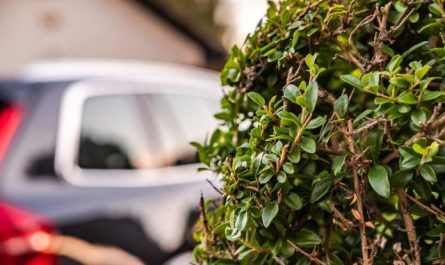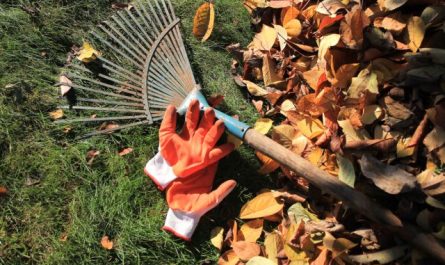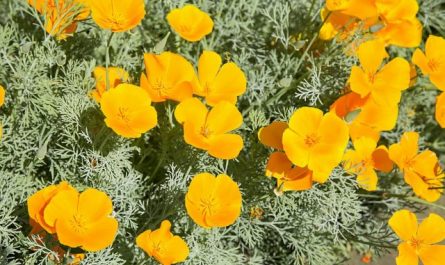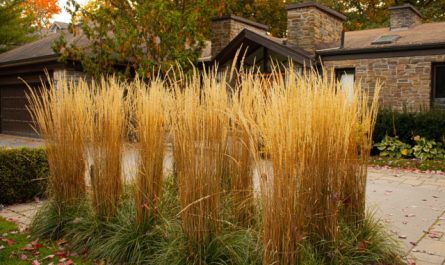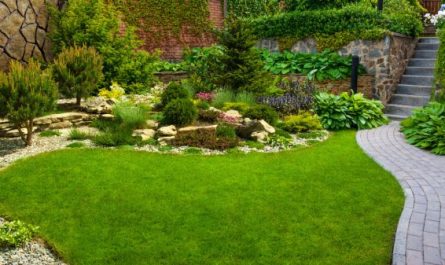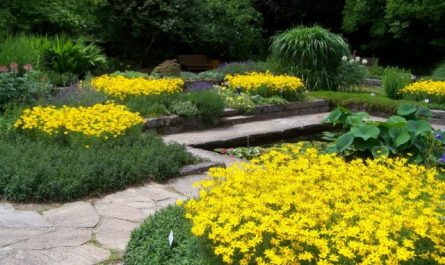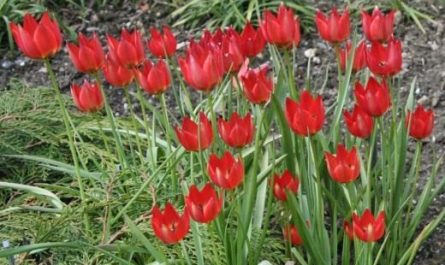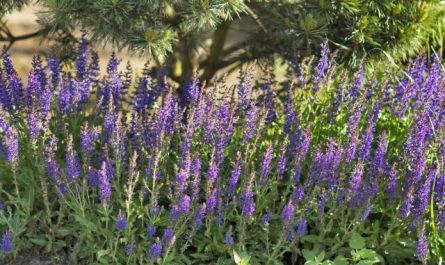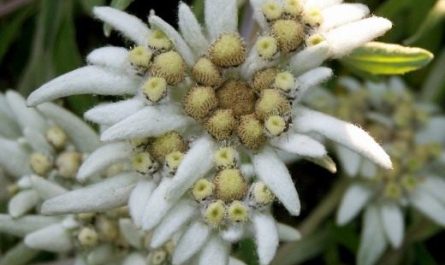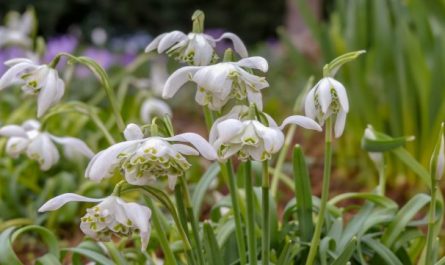Heather is one of the most amazing plants in garden design. Compact evergreen shrubs, covered with small pink, yellow or white flowers at the end of the season, are loved by many for their delicate appearance and ability to grow in clumps. Heathers decorate the site even in the most gloomy period of the year – in winter, when, it would seem, there is nothing to look at. However, due to special preferences for growing conditions, most gardeners consider this plant a complex crop. And this is actually true. But if you set a goal and understand what heather needs, you can easily “make friends” with it. Do you want to create an unusually attractive area in your garden – an evergreen heather carpet that will delight everyone with its exoticism? The main thing is to plant heather correctly.

What does heather like?
Heather often stays in private gardens for only one season. Planted in the fall, when many garden shops offer seedlings, the bushes die off over the winter and no one risks replanting them. But this failure only indicates that the heather was not provided with the growing conditions (or were provided incorrectly), on which it is very dependent. And as soon as you plant it “according to the rules”, it immediately turns from a “capricious” plant into an obedient garden plant.
What does heather like? Like all heather crops, common heather likes acidic soils (this is the main requirement for its cultivation!). Therefore, in nature, it grows in peat bogs, in pine forests. And if the conditions are suitable, it easily grows, occupying large areas.
But the soil for heather should not only be acidic, but also light, very loose – have good air permeability. The place should be sunny, especially if the variety has golden foliage. And protected from the winds.
However, not everyone has acidic soil on their plot, which means that in order for heather to feel comfortable, it is necessary to create these conditions artificially. Create a small island with acidic soil, providing it with the necessary conditions for life and development.
The same rule applies to all other heather crops – heather, wintergreen, crowberry; rhododendrons, as well as lingonberries, blueberries, bilberries and cranberries grow exclusively on acidic soils.

Correct planting of heather
In order to plant heather correctly, it is necessary to prepare a planting hole. It should be large, even for one plant. With the calculation that not only the roots of the planted shrub get into the acidic substrate, but also the soil around them is acidic. This is at least twice as wide (and preferably about 40 cm) and twice as deep (35-45 cm) as the volume of the pot in which the seedling was purchased.
Next, you need to take care of the substrate itself. To prepare it, you need to take one part of acidic peat (red high-moor peat) and one part of acidic coniferous soil, right along with half-decomposed coniferous litter. In addition to the fact that this mixture will provide the heather with the necessary acidity, it contains soil fungi that are so necessary for heathers to fully develop. And a supply of decomposing organic matter, which will feed the plants for many years to come.
If the soil is clayey and heavy, drainage must be arranged at the bottom of the hole. It can be made from neutral materials. This is expanded clay, fragments of clay tiles, but not white crushed stone, which can reduce the acidity of the soil. If the planting site is located in a lowland, in order to avoid accumulation and stagnation of moisture, it is better to make a small embankment or arrange a raised flowerbed for heathers.
When buying seedlings, pay attention to their quality. Choose green, full-fledged, well-developed bushes. If the base of the plants has dried out, it is better to refrain from buying.
Before planting, the seedlings must be placed in a container with water and well watered. After removing the plant from the pot, loosen the root ball a little. If the roots are not straightened, the plant will take root worse, its root system, and as a result, the above-ground part will not grow.
Heathers look good in group planting, but when planting plants, it is necessary to remember that these modest shrubs will gradually spread out and grow. Therefore, it is necessary to leave a distance of about 20-30 cm between them. In addition, it is important not to deepen the seedlings, but to plant them at the same level at which they grew in the pot.
After planting, the plants are watered generously and, if possible, mulched with pine bark, wood chips, peat or pine needles. Mulch will protect them somewhat not only from drying out, but also from the germination of weeds, and will gradually decompose and acidify the soil.
The best time to plant heather is late April-early May, before the hot weather sets in. And in the autumn, it is late September-early October, before the steady cold weather sets in.


Caring for Heathers
Heather should be fed several times a year with azalea fertilizer that maintains a low pH in the soil. These fertilizers can be sold in liquid or granular form. In this case, it is important to look at the label and follow the recommended application rates. If fertilizing is done in the summer, in hot weather, before adding it to the soil, the plants should be watered with ordinary irrigation water.
During the season, heathers need to be watered regularly. The soil underneath them is loose, easily drains water and dries quickly, so you can refrain from watering only if the weather is rainy. It is better to let the water settle so that the chlorine evaporates from it. On warm summer evenings, heathers can be refreshed by sprinkling.
In addition to watering and fertilizing, further care should also include pruning. It must be done annually in the spring to form a beautiful, neat bush. If this is not done, branching will occur at the tips of faded shoots and the shrub will eventually acquire an untidy appearance. Therefore, pruning is carried out before the beginning of spring plant growth, removing the part of the shoots that bloomed last year. If the heather has dried out, then all dried shoots are removed at the same time. And finally, every 3-4 years, heather bushes are cut short enough to stimulate its renewal.
Many heathers tolerate winter well, but there are also varieties that are sensitive to low temperatures. Therefore, it would be good to cover the heather clumps for the winter. This can be done by covering the plantings with spruce branches.

Heather in garden design
When planting heathers in your garden, it is important to understand not only their preferences for soil and care, but also the features of the decorative period. These amazing plants bloom in late summer-autumn, decorate the garden until the snow falls, but in the spring they look quite nondescript. For this reason, it is better not to place them in the most visible place, as a border along the path or in a flowerbed at the entrance. But place them in compositions with other plants that can decorate the garden in spring and summer.
It is good if these are crops with the same soil requirements as heather – rhododendrons, hydrangeas… In addition to the general care features, they will also protect heather from drafts.
Heathers look best when planted in groups. Therefore, when purchasing planting material, you should not choose many different varieties, but only one or two or three, several plants of each variety for planting in groups. In this case, you should pay attention not only to the color of the leaves and flowers, but also to the flowering period and the height of the bushes. The taller ones should be planted in the background, the shorter ones in the foreground.





